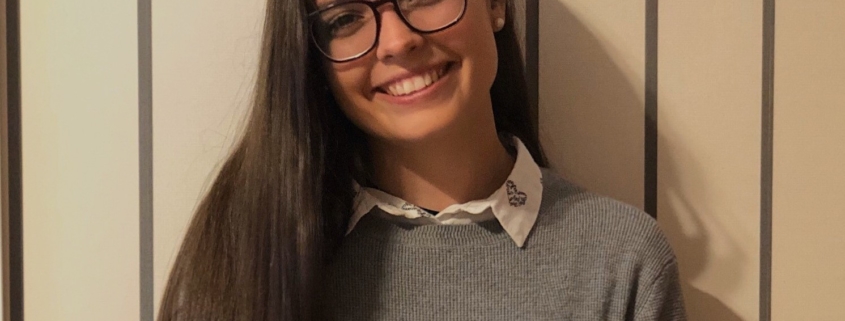Ailín Svagzdys, BioRender Graphical Abstract Contest Winner
As the Crastina team has recently reported on, BioRender is running their Annual Graphical Abstract Contest. With the submission deadline long gone and votes from the public also closed, the winners are starting to trickle in! The various winners of the $50,000 worth of prizes will be announced throughout June, and the Crastina team will be interviewing some of them about their motivations, experience and tips. Here’s Ailín Svagzdys, whose scientific illustration is an Early Bird Winner of the contest.

Ailín Svagzdys’s entry to the BioRender Annual Graphical Abstract Contest.
Hello Ailín! Very nice to interview you and congratulations on being an Early Bird Winner of the BioRender Annual Graphical Abstract Contest! I notice you are also one of the Expert’s Choice Semifinalists, well done! Why did you decide to submit an entry to this contest?
I’m currently writing up the final project of my bachelor’s degree in biotechnology, and I was using BioRender to create my figures. My thesis supervisor read about the contest and encouraged me to participate, so here I am!
What would you say was your biggest challenge when preparing the graphical abstract to submit for the contest? And what was the most gratifying or fun part of the process?
Undoubtedly, the most difficult thing was finding a way to explain various concepts in a single image because that is what a graphical abstract is about, being able to express a larger concept in something easier to understand. The most gratifying part of the process was receiving the support of people from all over the world who stopped for a second to look at my figures and shared their ideas and opinions in order to improve!
Do you feel that a graphical abstract can help you enhance your ability to communicate your science? And why, or why not?
I consider that knowing how to communicate is just as important as the concept itself and I’ve always had a great interest in graphic design. My best way of studying for an exam was always through drawings and diagrams that allowed me to visualize the general concept more clearly.
Was this your first adventure on trying to communicate science in such a visual way or are you experienced in this? What are your tips for delivering science in the form of a graphical abstract?
For the general public, this was the first time. Although as I already mentioned, I’ve been using drawings for several years to help myself study for university exams. Of course, there are many tips to make a professional image, but in my case, I simply draw in the way that is best for me to understand, no hidden secret.
Finally, tell us a little more about yourself and about what this prize means to you.
I’m 22 years old, I live in Buenos Aires, and I’m in the last year of my bachelor’s degree in Biotechnology. This award served as a vote of confidence to continue studying and doing what I like most, science and graphic design, two worlds that seemed completely different and turned out to be complementary.
- Turning frustration into change: Jean-Sébastien Caux, founder of SciPost - August 9, 2021
- Dr Nicola Nugent: Publishing Manager at the Royal Society of Chemistry - December 7, 2020
- Public Engagement and Trust in Science: In Conversation with Dr. Farzana Meru - November 23, 2020
- Is the peer review process trustworthy? Perspectives by Dr. Jurado Sánchez - November 4, 2020
- Prof. Maria Baghramian: Policy, Expertise and Trust in Action - October 29, 2020
- Prof. Luke Drury: ‘When Experts Disagree’ - October 5, 2020
- Are we what we hear? A reflection on sound, identity and science communication - September 27, 2020
- Sign your Science - September 22, 2020
- Raven the Science Maven - August 18, 2020
- Dr Mark Temple: DNA Sonification or when Scientist are musicians - August 5, 2020





Leave a Reply
Want to join the discussion?Feel free to contribute!